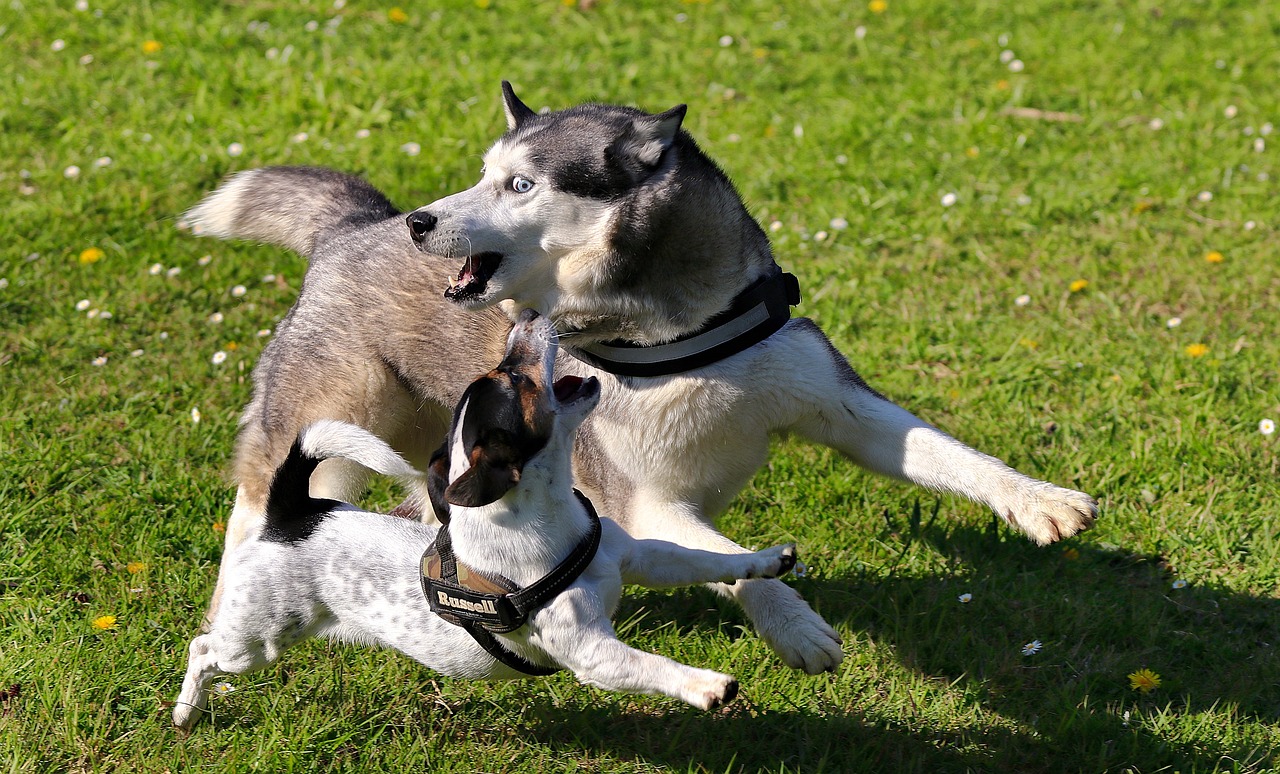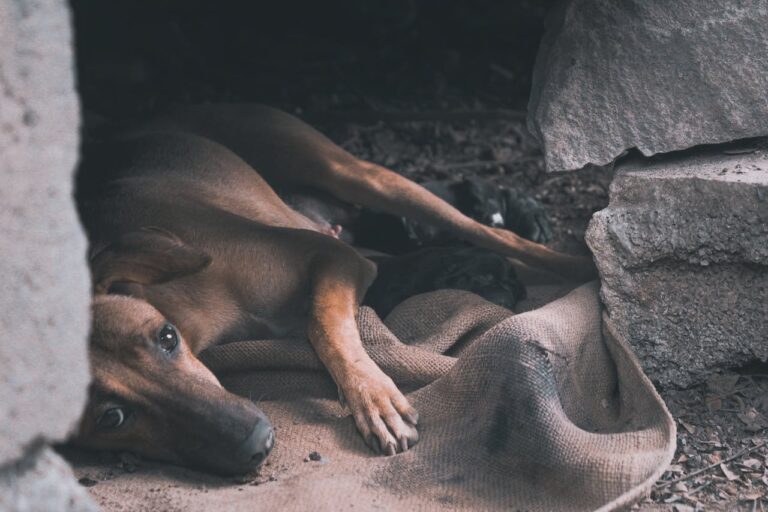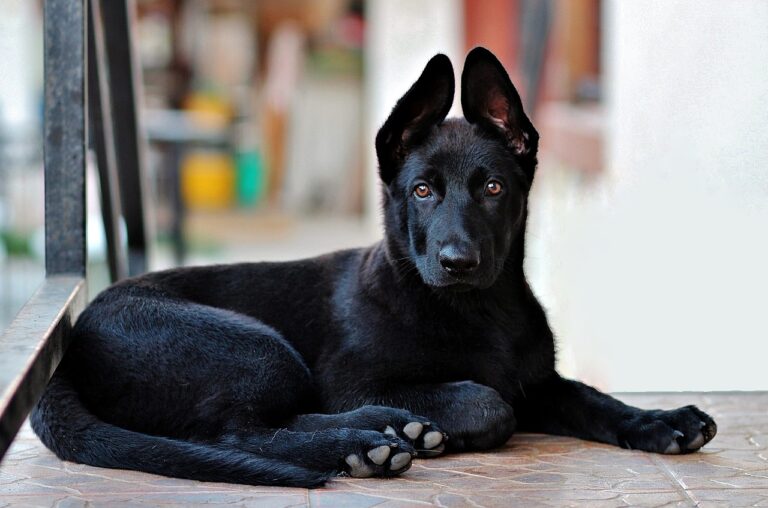
Well, you just got a new puppy, and it’s about 12 weeks old. You can’t wait to bring it home and have it interact with your whole household. But wait! You have other much older and bigger dogs in the house. Now you are wondering how this is going to work. Would it be safe for your new twelve-week puppy to interact with your much older dog? Today’s post has been designed to answer this question while leaving you with additional socialization tips to help make your puppy’s interaction with much older dogs as smooth as possible. So, can your new 12-week-old puppy be around your older dog?
The answer is yes; your 12-week-old puppy can be around and interact with older, stronger dogs. The key to this is good introductions and, of course, supervision. Never leave your younger 12-week-old puppy alone with an older dog because even though the bigger dog might be well-socialized, a lot happens during their interaction which could lead to aggression, which you are trying to avoid.
As a result, many inexperienced dog owners tend to keep their younger dogs away from their much older dogs. Although we do not condemn the same action, teaching your 12-week-old puppy how to interact with the much older, bigger dogs will be much better. This post will look at various steps to help your younger will be much better at interaction.
Table of Content
Successfully Introduce Your 12-week-old Puppy to Older Dogs (In 10 Steps).
Introducing a 12-week-old puppy to older dogs should be done gradually and carefully to ensure a positive and successful interaction. Here are the steps to properly introduce them:
1. Choose a Neutral Territory
Select a neutral space where none of the dogs has established territorial ownership. This can help minimize any potential territorial behavior or aggression. This means that if your older dog has taken outside your house as their territory, it will be best if the interaction is done inside the house where you can establish control as the Alpha.
2. Prepare the environment
Remove toys, food bowls, or items that could trigger possessive behavior. Create a calm and controlled environment to facilitate the introduction. Remember, the goal is to ensure minimal distractions during this process. So anything that could make both dogs uneasy should be removed. This includes people and other animals that may be on the property.
3. Start with separate areas
Keep the new puppy and older dogs in separate areas initially. This lets them become acquainted with each other’s scent without direct contact. Make sure both dogs experience the same treatment during this process. This means that if one dog is on the leash, the other must also be on a leash. If you feel uncomfortable putting a leash on your younger dog, you could put him in a big enough crate where he can see the other dog through. A picture of an appropriate create for this training will be shown below.

4. Introduce Both dogs to Their Scents
Swap blankets or toys between the dogs so they can become accustomed to each other’s scent. This helps familiarise them before the face-to-face introduction. You could also take both dogs to each other’s resting place, where they can access more scents of each other, which will help increase the chances of a smooth meeting.
5. Introduced Both Dogs Visually.
Use a gate or barrier to separate the dogs while allowing them to see each other. Observe their body language for signs of interest, curiosity, or stress. Reward calm and relaxed behavior with treats and praise. If you do not have a create for this exercise, you could use a leash or a harness and leash if you have one. The key to this training is for both dogs to see each other and be comfortable seeing each other.
6. Controlled physical introduction
You can proceed to a controlled physical introduction when both dogs appear calm and relaxed. Keep both dogs on leashes and have an additional person available to help if needed. Also, remember that even after strictly following these steps, your older dog could still become aggressive during this interaction, especially if your new puppy is bold and very imposing. So it is okay to make physical introductions in short intervals and, under keen supervision, pull away both dogs before things get out of hand.
7. Supervise the interaction
Monitor the interaction closely for signs of aggression or discomfort. Interrupt any negative behavior, redirecting the dogs’ attention to positive activities or commands. Also, mark each interaction at the end with either praise or a treat to help encourage both dogs to keep having good interactions.
8. Gradual increase in interaction time
Gradually increase the duration of the interactions over subsequent sessions, always prioritizing positive experiences and avoiding any signs of stress or aggression. Once your bigger, much older dog has become comfortable around your new puppy, you could try releasing your puppy while holding your adult dog on a leash. Once you can be certain that both dogs understand their roles and are comfortable around each other, you could release both dogs to play and interact freely, but with you present.
9. Provide separate spaces
Ensure each dog has a separate retreat space and alone time if needed. This allows them to establish their boundaries and feel secure. You can do this by providing both dogs’ creations and feeding them separately. You could thus give both dogs time out if play becomes too rough and competitive.
10. Ongoing socialization and training
Continue providing opportunities for positive interactions, supervised play, and socialization experiences between the dogs. Consistent training and reinforcement of desired behaviors are essential for a harmonious relationship.
Final Thoughts.
This post has helped you see that it is possible to have your new 12-week-old puppy play and interact which much older and bigger dogs if they are properly introduced. Introducing your new puppy to other dogs is just one aspect of puppy socialization. You will need a whole new approach if you have a puppy that completely can’t stand other dogs. In our previous post on introducing your puppy to other dogs, we gave you a work-through on how to deal with this problem.



